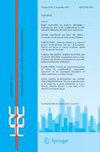租金管制补贴的收入分配分析
IF 1.8
3区 经济学
Q3 ENVIRONMENTAL STUDIES
引用次数: 0
摘要
租金管制措施通常是为了帮助低收入家庭和减少隔离。然而,关于这些政策的社会影响的实证研究很少,特别是关于租金管制公寓如何分配的作用。本研究利用一个新颖的数据集分析了租金管制对收入分配的影响,该数据集包括2011年至2016年在瑞典斯德哥尔摩市中心获得租金管制公寓的人的特征。具体而言,本文分析了通过公共和私人房东的公寓集中管理队列分配公寓的影响。为了量化租金补贴,我们以自住市场作为一个偏差点来估计假设的市场租金。我们发现租金补贴与时间之间存在正相关关系。第四个四分位数的公寓平均需要21年,而第一个四分位数的公寓平均需要10年。在租金补贴水平和租户收入方面存在相当大的异质性。即使通过排队分配对高收入家庭的好处不如基于房东偏好的分配,我们也发现了一些回归效应。在控制排队时间的情况下,我们发现年收入排名第四的租户每月获得的租金补贴大大高于收入排名第一的租户。同样,与补贴较少的公寓相比,补贴幅度为四分之一的出租公寓的租户年龄较大,收入高得多。这种倒退效应是由高收入者租用更大的公寓、获得更大的绝对补贴以及能够排队等待更长的时间所驱动的。本文章由计算机程序翻译,如有差异,请以英文原文为准。
An income-distributional analysis of the rent control subsidy
Abstract Rent control measures are typically in place to assist low-income households and decrease segregation. Yet, there is little empirical research on the social impact of such policies and specifically the role of how rent-controlled apartments are allocated. This study analyzes the income-distributional effects of rent control with a novel dataset that includes characteristics of those who received rent-controlled apartments between 2011 and 2016 in central Stockholm, Sweden. Specifically, this paper provides analysis of the impact of allocating apartments through a centrally managed queue with apartments from both public and private landlords. To quantify the rent subsidy, we estimate hypothetical market rents by taking the owner-occupied market as a point of deviation. We find a positive relationship between the rent subsidy and time in que. Apartments in the fourth quartile of subsidy require on average 21 years in que, while those in the first quartile require 10 years on average. There is considerably heterogeneity in the level of rent subsidy, and tenant income. Even as allocating through queuing should benefit high-income households less than allocation based on landlord preferences, we find several regressive effects. Controlling for time in queue, we find that tenants in the fourth quartile of annual income receive monthly rent subsidies that are substantially higher than renters in the first quartile of income. Similarly, rental apartments in the fourth quartile of the subsidy have older tenants with substantially higher incomes compared to less subsidized apartments. The regressive effect is driven by high earners renting larger apartments with larger absolute subsidies and being able to wait longer in queue.
求助全文
通过发布文献求助,成功后即可免费获取论文全文。
去求助
来源期刊
CiteScore
3.70
自引率
10.50%
发文量
63
期刊介绍:
The Journal of Housing and the Built Environment is a scholarly journal presenting the results of scientific research and new developments in policy and practice to a diverse readership of specialists, practitioners and policy-makers. This refereed journal covers the fields of housing, spatial planning, building and urban development. The journal guarantees high scientific quality by a double blind review procedure. Next to that, the editorial board discusses each article as well. Leading scholars in the field of housing, spatial planning and urban development publish regularly in Journal of Housing and the Built Environment. The journal publishes articles from scientists all over the world, both Western and non-Western, providing a truly international platform for developments in both theory and practice in the fields of housing, spatial planning, building and urban development.
Journal of Housing and the Built Environment (HBE) has a wide scope and includes all topics dealing with people-environment relations. Topics concern social relations within the built environment as well as the physicals component of the built environment. As such the journal brings together social science and engineering. HBE is of interest for scientists like housing researchers, social geographers, (urban) planners and architects. Furthermore it presents a forum for practitioners to present their experiences in new developments on policy and practice. Because of its unique structure of research articles and policy and practice contributions, HBE provides a forum where science and practice can be confronted. Finally, each volume of HBE contains one special issue, in which recent developments on one particular topic are discussed in depth.
The aim of Journal of Housing and the Built Environment is to give international exposure to recent research and policy and practice developments on the built environment and thereby open up a forum wherein re searchers can exchange ideas and develop contacts. In this way HBE seeks to enhance the quality of research in the field and disseminate the results to a wider audience. Its scope is intended to interest scientists as well as policy-makers, both in government and in organizations dealing with housing and urban issues.

 求助内容:
求助内容: 应助结果提醒方式:
应助结果提醒方式:


